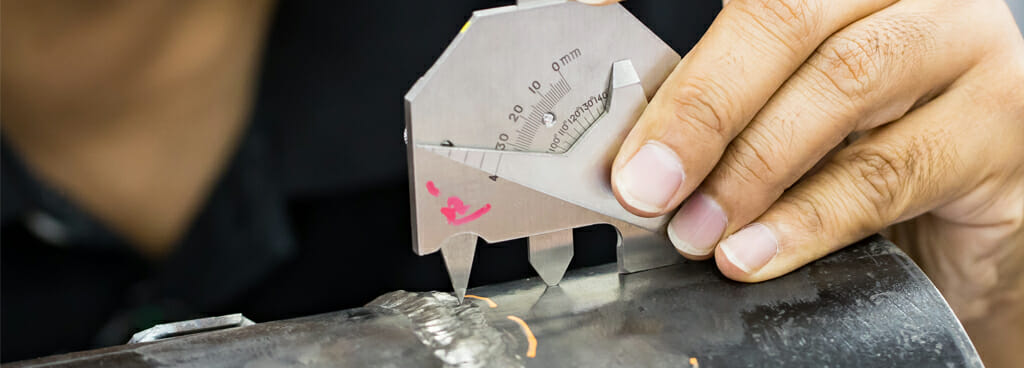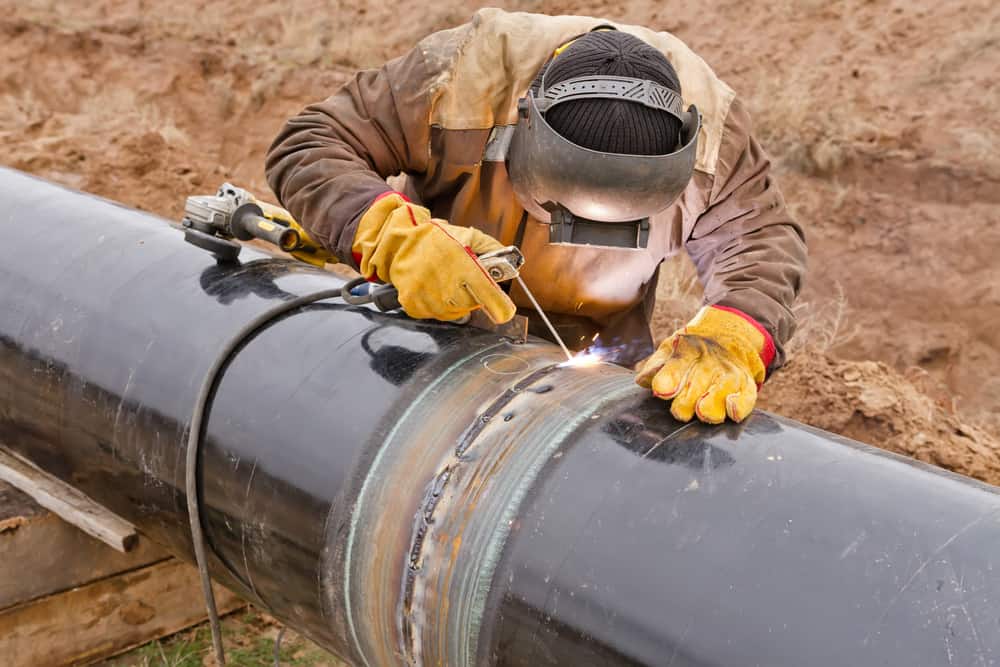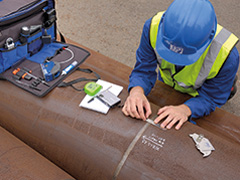Exploring Advanced Equipment and Techniques for Accurate Welding Inspection
In the realm of welding evaluation, the pursuit of accuracy and integrity is extremely important, stimulating the advancement of innovative tools and approaches. Laser scanning developments and automated evaluation systems, geared up with artificial knowledge, are redefining the landscape by minimizing human error and enhancing safety and security procedures.
Ultrasonic Evaluating Innovations
Ultrasonic screening innovations often represent the leading edge of improvements in welding inspection modern technologies. These developments have considerably boosted the ability to identify and assess discontinuities within welded structures, making sure improved integrity and security.

Additionally, improvements in software formulas for data evaluation have improved the accuracy of defect discovery and sizing. Automated ultrasonic testing systems currently use high-resolution imaging, allowing comprehensive assessments of weld quality. These systems are usually integrated with innovative visualization devices, which promote the interpretation of outcomes.
Radiographic Assessment Methods
While ultrasonic testing technologies have set a high criterion in non-destructive examination, radiographic examination methods continue to play an indispensable function in welding assessment by using distinct understandings right into material honesty. Radiographic testing (RT) employs using X-rays or gamma rays to pass through materials, creating a radiograph that aesthetically stands for the internal structure of a weld. This imaging ability is important for spotting subsurface flaws such as porosity, additions, and fractures that may not be visible via surface area assessments.
The procedure involves placing a radiation resource on one side of the weld and a detector on the opposite side. Variations in product thickness and thickness influence the attenuation of the rays, producing a different picture that precisely delineates defects. RT is particularly useful for checking complicated geometries and thick sections where other methods might fail.
In spite of its effectiveness, radiographic inspection needs to be conducted with rigorous adherence to safety methods because of the unsafe nature of ionizing radiation. Additionally, the interpretation of radiographs needs competent employees, as the high quality of the evaluation directly affects the reliability of the assessment. Recurring advancements in digital radiography are improving picture clearness and analysis performance, enhancing RT's crucial function in making sure weld high quality.
Laser Scanning Advances
Accepting laser scanning technology in welding inspection has actually reinvented the assessment of weld top quality and stability. Unlike conventional inspection strategies, laser scanning provides quick information procurement, dramatically enhancing the performance and accuracy of weld analyses.
Laser scanning breakthroughs have brought about considerable improvements in identifying and spotting surface area defects such as porosity, absence of fusion, and damages. The high-resolution data makes it possible for examiners to perform thorough analyses, ensuring that welds satisfy stringent market criteria. Additionally, this method supports the advancement of electronic records, helping with lasting quality assurance and traceability.
In addition, laser scanning modern technology integrates perfectly with software program remedies created for automated flaw detection and analysis. The resultant data can be easily shared and assessed, advertising collaborative decision-making procedures. As industries remain to demand greater criteria for weld quality, laser scanning remains at the forefront, offering unequaled accuracy and effectiveness in welding assessment.
Automated Examination Equipments

Automated assessment systems use the advantage of consistency, removing human mistake and subjectivity from the evaluation process. They are made to run in different environments, from manufacturing floorings to remote field websites, making sure extensive coverage. Welding Inspection Madison. These systems can be set to abide by specific welding criteria and requirements, providing thorough reports and documentation for top quality control functions
Furthermore, the combination of cloud-based platforms helps with the storage and evaluation of vast quantities of evaluation information. This enables fad analysis and predictive upkeep, enabling suppliers to deal with possible issues prior to they escalate. The adoption of computerized evaluation systems is a crucial relocation in the direction of boosting the reliability and effectiveness of welding processes in industrial applications.

Enhancing Security and Effectiveness
A significant facet of improving safety and performance in welding examination hinges on the combination of innovative modern technologies that enhance operations and minimize dangers. The fostering of sophisticated non-destructive screening (NDT) techniques, such as ultrasonic screening, phased range ultrasonic screening (PAUT), and radiographic testing, plays a crucial function in ensuring structural honesty without jeopardizing the safety and security of the workers entailed. These techniques enable thorough inspections with very little downtime, minimizing prospective threats related to typical methods.
Moreover, the execution of real-time data analytics and maker understanding algorithms has actually transformed the method assessment information is interpreted. By utilizing anticipating analytics, possible defects can be determined prior to they show important link up right into critical failings, making certain timely interventions and maintenance. This positive technique dramatically enhances operational efficiency and safety in welding processes.
Additionally, remote assessment innovations, including drones and robot crawlers equipped with high-resolution electronic cameras, allow examiners to assess hard-to-reach locations without exposing them to hazardous problems. This not only improves examination precision but additionally reduces human risk. By leveraging these innovative tools and techniques, industries can attain higher security criteria and functional efficiency, eventually bring about more lasting and read trustworthy welding inspection techniques.
Verdict
The combination of advanced tools and approaches in welding inspection considerably improves issue discovery and makes certain structural integrity. Welding Inspection Madison. Technologies such as phased variety ultrasonic testing, electronic radiography, and laser scanning enhance issue characterization, while automated inspection systems and AI decrease human error. Remote innovations assist in secure evaluations in harmful atmospheres, advertising a proactive upkeep strategy. These innovations not just boost evaluation performance however also add to boosted safety and security and quality control in commercial welding applications.

Ultrasonic screening advancements often represent the leading edge of improvements in welding inspection innovations.While ultrasonic testing technologies have actually set a high standard in non-destructive assessment, radiographic examination methods proceed to play an integral role in welding inspection by offering one-of-a-kind understandings into material integrity.Accepting laser scanning innovation in welding assessment has actually reinvented the assessment of weld quality and stability. As markets proceed to webpage require greater standards for weld high quality, laser scanning remains at the center, supplying unrivaled precision and performance in welding inspection.
Automated evaluation systems offer the benefit of consistency, getting rid of human error and subjectivity from the inspection process.